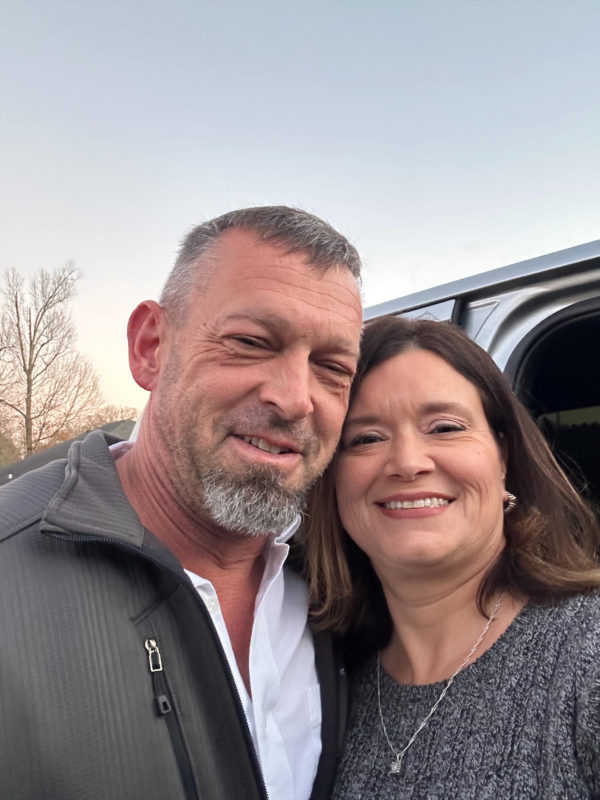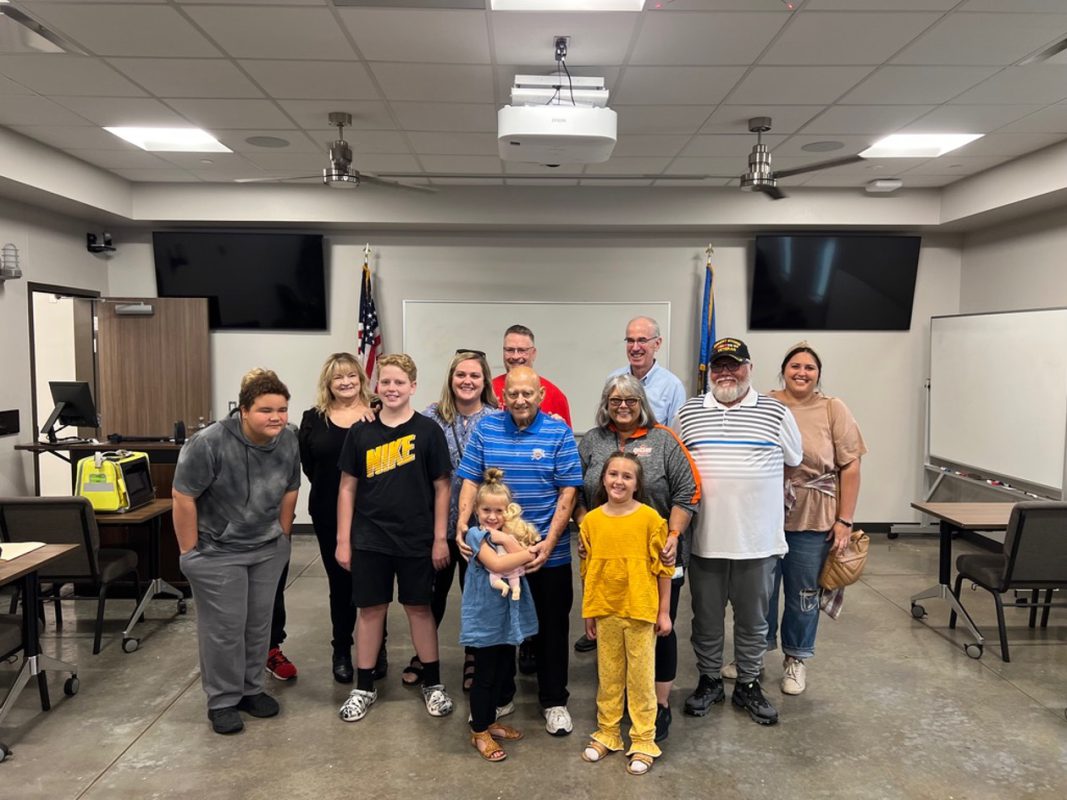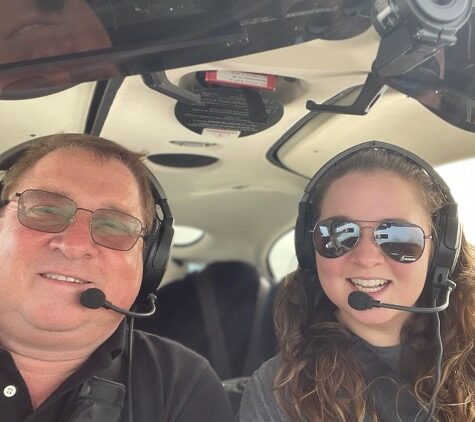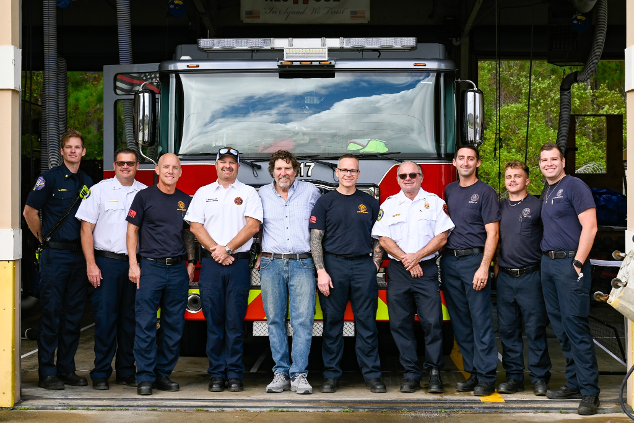Emmanuel, Age 15
He drowned in a warm water pool in July 2019 in Minnesota. After >15 minutes underwater, police/first responders/public safety officer dove into pool, pulled him out, and provided Head Up CPR using the EleGARD for 30+ minutes. Pulse regained. Walked out of rehab 6 weeks later. Graduated from high school in 2023. He is neurologically intact and enrolled in a local junior college.
What was exceptional?
Surviving and functioning normally after drowning and being under warm water for >15 minutes.

Wayne Kewistch, Age 56
Cardiac arrest at home. Received Head Up CPR for about 15 minutes. Awoke in the ambulance on route to the hospital. He started moving around and paramedics tried to calm him down. They said, ‘Chief, calm down, you had a cardiac arrest’. The first words out of his mouth were, “Oh F…”. His main arteries were reopened and he was discharged from the hospital intact 52 hours later. He has done extremely well since then and is fully functional and neurologically intact. Husband and father, he is working full time on firefighter health and well-being.
What was remarkable?
The patient turned out to be the Fire Chief for a service that had implemented the EleGARD™ System just a few months prior to his own cardiac arrest. The Chief contacted one of our clinical educators, saying “If you had not reached out to me and others about the EleGARD, I don’t think I would be typing this email. Please extend my thanks to Dr. Lurie for his research and the ultimate application with the EleGARD. I was fortunate to have every piece of the chain of survival fall into place, including the most advanced pre-hospital cardiac arrest survival techniques / equipment.”
Read More Here.
Kennedy Grice and Laura (mother), Age 20
Cardiac arrest in January 2023 while taking a morning walk with friends. After 30+ minutes of Head Up CPR, a week in the ICU, and then open heart surgery, Kennedy went back to college and finished her sophomore year at the U of Alabama at Tuscaloosa with a 4.0 GPA. Completely intact.
What was exceptional?
Complete recovery within days after her prolonged arrest, with the opportunity to return to school, not miss a semester, and perform at the top of her game.
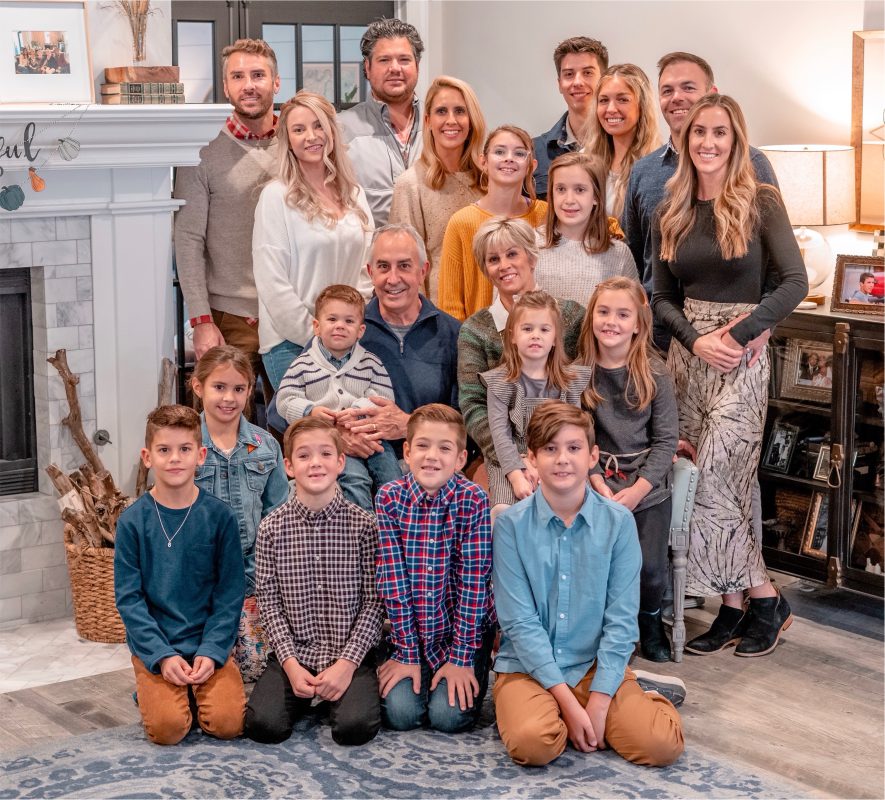
Stephen Dudley, Age 67
EMS was dispatched to a residence for a 67-year-old male. He was working in the yard on a hot summer day digging a French drain. He had a history of coronary disease. He came in to cool down and then had a cardiac arrest. His wife heard him groan, called 9-1-1, and was instructed how to perform CPR. The patient was found to be in ventricular fibrillation when EMS arrived and was shocked but remained in ventricular fibrillation. Manual ACD CPR was performed with a ResQPOD ITD, and the patient was rapidly placed onto the EleGARD™ System. Manual ACD CPR was continued for about 12 minutes. Additional shocks and medication eventually resulted in a sustained ROSC. The patient received therapeutic hypothermia in the ED, and coronary angiography and stenting were performed. After six days in the hospital, he was discharged home.
What is remarkable?
Within two days, the patient was fully awake but remained on a mechanical ventilator due to concerns about a possible pneumonia. He works as the lead neurology technician in the hospital where he was receiving treatment. He performs EEG tests on people, including those after cardiac arrest. He was lucid and communicating with his neurologist boss two days after his arrest, despite being intubated. The neurologist could not believe how intact he was given his history. He returned to work and was performing EEG studies on other patients a week after his cardiac arrest. He continues to work and remains fully neurologically intact.
Darlene Skogan, age 44.
Darlene Skogan was 44 when she had a cardiac arrest in August 2019. Her daughter was 14 at the time. She received 30+ minutes of Head Up CPR using the EleGARD after her main coronary artery spontaneously dissected. This picture of Darlene with her partner was taken 5 years later. She is the project manager for a company that restores fire-damaged and flood-damaged houses. Her daughter, age 19, graduated from high school last year, and is also thriving.
What was exceptional?
Complete neurological recover after 30+ min of Head Up CPR without any need to actually repair the dissected artery, which healed by itself.

Jason Benjamin, age 50
A 50-year-old former Firefighter/EMT developed chest pain an
hour after his regular workout. He had previously been seen in an emergency department multiple times for this problem. This time he asked his friend to take him to the nearest fire station. He told his friend he thought he was going to die. He was initially talkative and alert at the fire house but became unresponsive and was found in ventricular fibrillation. He was shocked at 200 joules but remained in VF. Manual ACD CPR was performed with a ResQPUMP and a ResQPOD (ITD-16) and the patient was rapidly placed onto the EleGARD™ System. He started moving, pushing fire fighters away. CPR was stopped but he was still in arrest. Manual ACD CPR was resumed, and he again started pushing away the fire fighters. CPR was stopped again but he remained in ventricular fibrillation. After over 30 minutes of the combination of ResQPUMP/ResQPOD/EleGARD CPR and eventually double sequential defibrillation, he was successfully resuscitated.
In the hospital emergency department, he pointed to his breathing tube and asked for it to be pulled. As he lay in bed that night, he wondered why he was so intact after 30+ minutes of CPR, since he retrieves organs for transplant from people who have had <15 minutes of CPR without success and are determined to be brain dead. When he learned about Head Up CPR 2 weeks later after visiting the fire department to thank everyone, he wrote an email to Dr. Bachista, EMS Medical Director for St. John’s County FL. He suggested the term Neuroprotective CPR, instead of a Head Up CPR Bundle. Jason continues to work, travel around the world, and remains completely intact. The picture was taken a year after his arrest after he did a backflip into the Mediterranean to celebrate his anniversary.
What was exceptional?
He was thinking so clearly within hours after receiving 30+ minutes of CPR. Shortly thereafter he recommended the name Neuroprotective CPR to the EMS Medical Director who started the Head Up CPR program that saved his life.
Ronald McDonald, Age 80
Cardiac arrest watching grandson play football. Head Up CPR for about 15 minutes. He woke up in the emergency department and his first words were, ‘who won the game?’ Picture shows Ron with his family, with grandson in the Nike shirt standing next to him.
What was Remarkable?
He was able to talk coherently within <30 minutes after getting 15 minutes of Head Up CPR using the EleGARD.
James Spurgeon, age 60
Cardiac arrest at home. After 15+ minutes of Head Up CPR James sat up as the medics were transporting him down the stairs and asked, “How is my wife?” He is a pilot for UPS. Within less than 6 months after his arrest he and his daughter circumnavigated the US. A photo from that flight shows what joy he still gets from flying.
What was exceptional?
He was able to talk coherently within <5 minutes after getting 15 minutes of Head Up CPR. He remains vital and neurologically intact.
Gene Eubanks, age 60
Cardiac arrest in Minneapolis Airport captured on video surveillance cameras. After 30 minutes of Head Up CPR and the reopening of his block coronary arteries, he flew home to San Diego <1 week later completely intact.
What was exceptional?
Based upon the videos he appeared to have no chance for survival yet was awake, alert, completely intact, and able to fly 6 days after his arrest.
See video produced by patient at 1-year survival anniversary here.
Read more here.
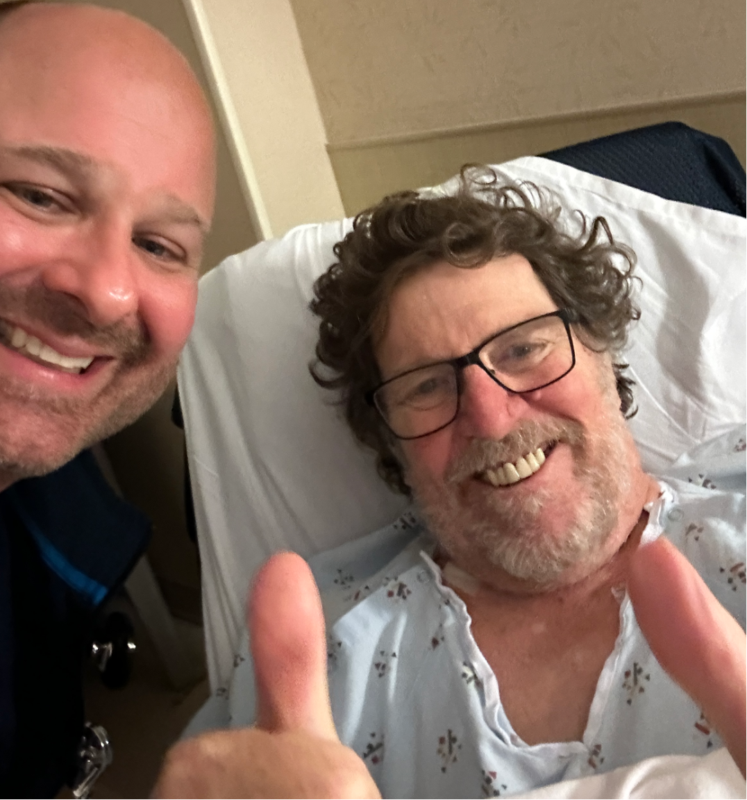
Ken Commins, Age 70
Ken moved from N Dakota where he worked in mining to St. John’s Fl for better healthcare and a warmer climate in 2022. Two years later, while working at his desk at home, he suddenly felt dizzy and called to his wife. She found him unresponsive and called 911. She was unable to move him to perform CPR, but paramedic firefighters arrived within about 4 minutes. Manual ACD CPR was performed with a ResQPUMP and a ResQPOD (ITD-16) and he was quickly placed onto the EleGARD™ System. The fire crews transitioned to a LUCAS device after 10 minutes and continued the resuscitation for 38 minutes, he was defibrillated 12 times including 8 double sequential defibrillations. With ongoing resuscitation using the EleGARD, ResQPOD, and LUCAS, he was transported to the hospital and ROSC was finally achieved after a total of 72 minutes of CPR.
What was remarkable?
That the entire healthcare team didn’t give up and after 72 minutes of continuous CPR he was successful resuscitated. Moreover, he was responding appropriately to comments and commands 24 hours after resuscitation – giving his wife and nurses two thumbs. He was fully neurologic recover.




